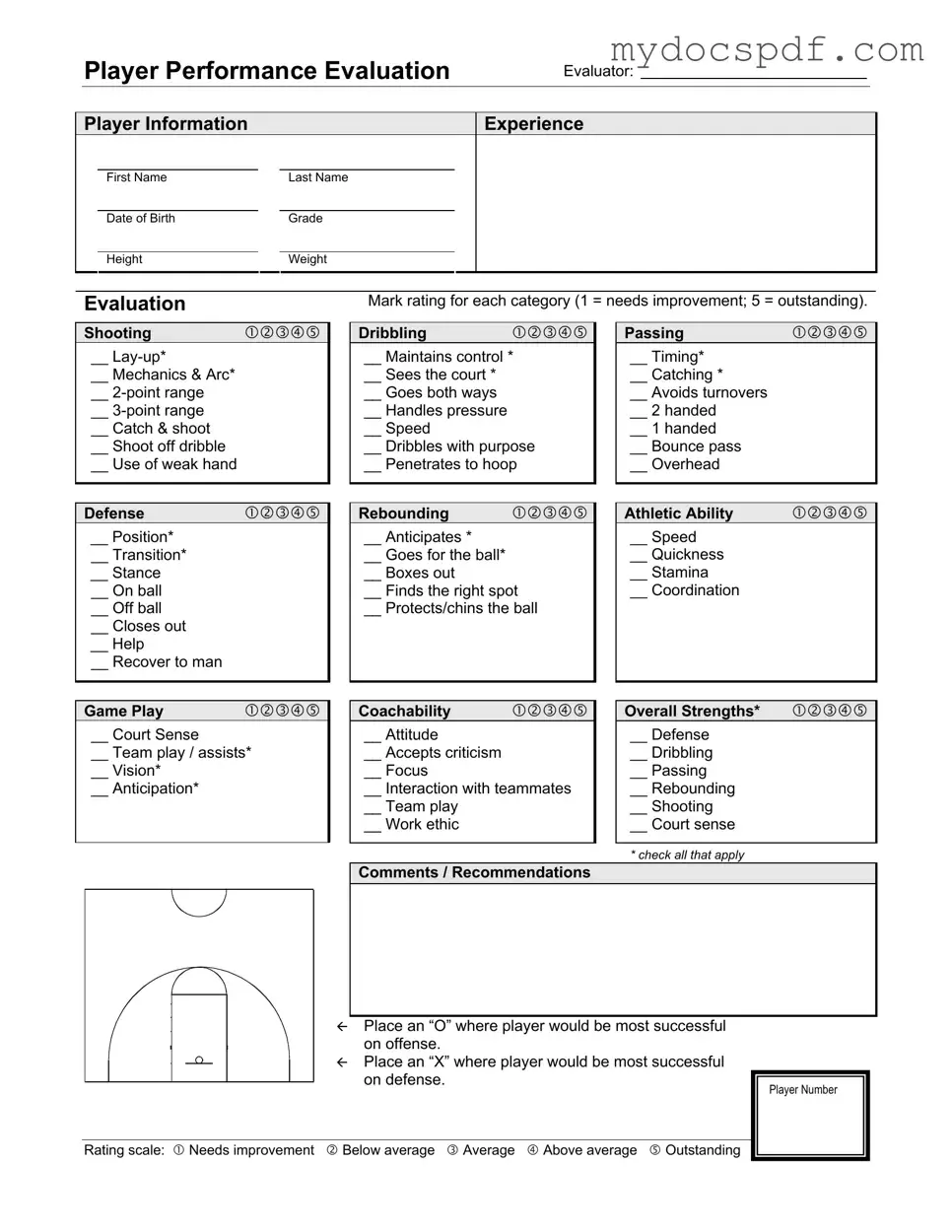Get Basketball Evaluation Form in PDF
The Basketball Evaluation Form is a structured tool used to assess a player's skills and overall performance on the court. It includes various categories such as shooting, defense, dribbling, and athletic ability, allowing evaluators to provide a comprehensive overview of a player's strengths and areas for improvement. By utilizing this form, coaches can make informed decisions about player development and team strategy.
Access Editor Here

